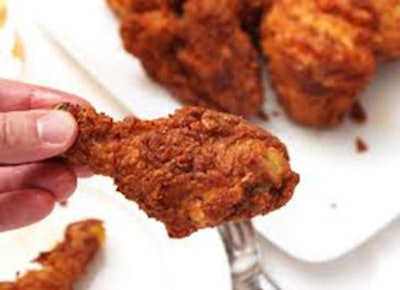
ROCKVILLE, Md. (PRNewswire) — Meatless Mondays are trending, but make no mistake, many U.S. consumers are still looking to sources of protein — be they conventional or alternative sources — as part of a diet rich in foods that provide health and wellness benefits and contain ingredients that address illness mitigation, according to market research firm Packaged Facts in the report Proteins - Classic, Alternative and Exotic Sources: Culinary Trend Tracking Series.
Data published in the report reveals that 57% of consumers are looking for foods with nutrients that address health concerns. Among the nutrients consumers are keying in on is protein. Protein provides many benefits, including its support of weight management and proper growth, immune, heart and respiratory function. It's unsurprising then that Packaged Facts data reveals that 62% of consumers agree that they make it a point of getting plenty of protein.
As a result, the food industry has jumped on the opportunity to recast foods in a protein paradigm. Increased messaging that highlights the protein content of food, nutritional science-based claims and protein fortification are ways that innovators have beefed up products and dishes to align them with this protein diet trend. For on-the-go food and away from home dining, customers have turned to restaurants to make protein selections easier for their fast-paced lifestyles.
Fast-casual restaurants are creating dishes that signal high-protein content. For instance, power and protein bowls such as those offered by Panera Bread can appeal to customers looking for protein-rich meals. Healthy-dining, fast-casual chains are also promoting nutrition and high-protein content foods. Meanwhile, fast-casual Mediterranean restaurant chains, like Cava Mezze Grill, cater to customers rooted in a traditional diet of lean meats, legumes and vegetables, de-emphasizing starch, which is what Mediterranean diets represent to many Americans.
The protein-centric Paleo Diet, with a focus on nuts, eggs, grass-fed beef and fish, and avoidance of dairy, grains and processed foods, continues to see popularity and gives protein-rich diets a boost. More and more restaurant concepts are making it easier for those following the Paleo Diet to enjoy meals that fit their regimen. Providing transparency, including preparation methods and nutrition, and safeguarding culinary practices for the integrity of diets are of key importance for these types of restaurateurs. When done right, both menus and concepts alike can be tailored to diets that focus on protein and present protein-rich foods in new and innovative ways.
Packaged Facts advises that marketers should emphasize the protein content of some existing dishes, meals and beverages. Quick-serve restaurant chains are able to merchandise high-protein items, like Greek yogurt, high-protein probiotic drinkable yogurt, and "power salads or packs," separately in a dedicated space near the register or entryway. They will merchandise these items, taking the restaurant layout and customer flow into consideration, so it is easy for customers looking for a high-protein option to find it quickly and easily.
Creativity is key with "power" salads, but start with the basics: include lean meats, ancient grains, such as quinoa, yogurt and hummus. Develop power snack packs with a choice of almonds (and without, being mindful to those with allergies), yogurt cheese, dippable lean meats, salumi, nut butters, quinoa, amaranth and pea-protein snack squares.
Upscale casual dining chains and fine-dining chains can create protein-minded menu sections. Not all chains will be able to group high-protein dishes on their menus—it has to fit the concept, demographics and market—but most will be able to creatively combine ingredients to develop protein-rich meals and label them appropriately on the menu.
Casual dining chains have the most versatility with protein: they can add special menu sections and clearly label protein-rich foods on their menus. Additionally, the appetizer section of the menu is ripe for protein-rich small plates focused on lean meats and/or high-protein ancient grains. Chicken skewers, combined with legumes or grains, like quinoa or freekeh, can be robust in protein, while at the same time appealing to many diets that avoid dairy or starches.
Technology can also help restaurateurs appease protein-hungry diners. Tablet- and kiosk-based menus with ordering functionality can also help guide diners to smart food choices by grouping foods that have high amounts of specific nutrients or are lower in calories. These devices can also group or point to dishes that are just what protein-seeking diners are searching for.
For more insights from Proteins - Classic, Alternative and Exotic Sources: Culinary Trend Tracking Series or to purchase the report click here.
About Packaged Facts – Packaged Facts, a division of MarketResearch.com, publishes market intelligence on a wide range of consumer market topics, including consumer demographics and shopper insights, consumer financial products and services, consumer goods and retailing, consumer packaged goods, and pet products and services. Packaged Facts also offers a full range of custom research services. Reports can be purchased atwww.PackagedFacts.com and are also available on www.marketresearch.com and www.profound.com.





















